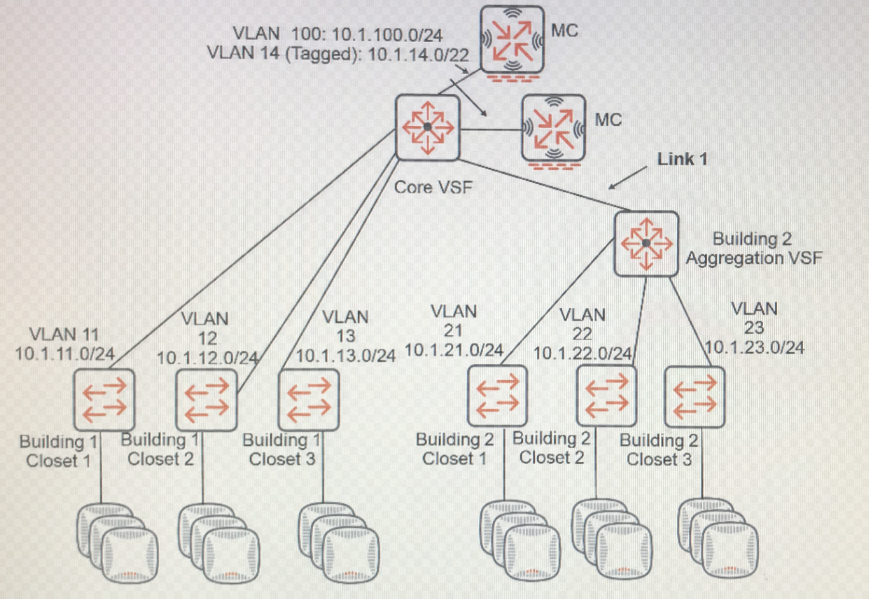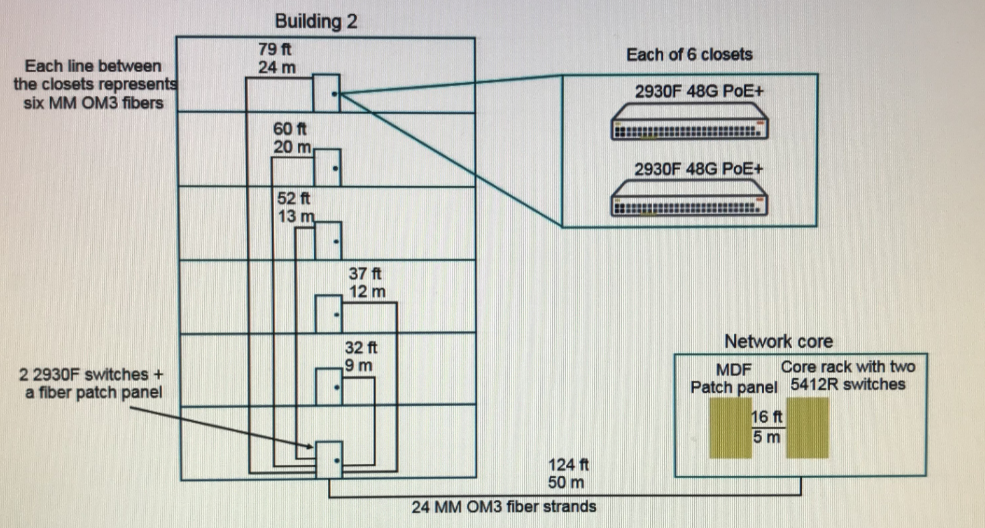HP HPE6-A47 - Designing Aruba Solutions
An architect needs to choose between an Aruba Mobility Controller (MC) 7010 or 7024. Which Ñcustomer need indicates that the 7024 is a better choice than the 7010?
An enterprise needs an upgrade to 802.11ac. Users run applications such as Web, email, voice, and video. The architect needs to conduct an active site survey to plan 802.11ac AP locations. The noise floor is about -90 dBm across the site.
Based on Aruba best practices, what is the minimum acceptable signal that the architect should look for to determine the test AP range?
A customer needs a networking solution that supports their Microsoft Skype for Business Unified Communications (UC) solution. The architect discovers that user wireless devices are Wi-Fi Multimedia (WMM) capable. Windows policies assign voice traffic DSCP 46 and video traffic DSCP 34.
Which potential issue should the architect explain to the customer about the default QoS settings?
A customer needs a wired network solution that can recognize and prioritize a wide array of different types of traffic, including casual Web browsing, voice, video, SAP Online, and file sharing.
The architect needs to choose between the Aruba 2930F or the 2540 Switch Series for the access layer switch. Why would the architect choose the 2930F rather than the 2540 Switch Series for this customer?
Refer to the exhibit.

The customer needs to expand its wired and wireless network to a new building, Building 2, which is near the existing building, Building 1. The exhibit shows the logical plan that the architect has created so far. The aggregation layer switches in the new building should provide the default gateway services for the VLANs in the new building and route traffic to the core. The existing Aruba Mobility Controllers (MCs) will control the new APs.
What should be the VLAN assignment for Link 1, indicated in the exhibit?
Read this scenario thoroughly, and then answer each question that displays on the right side of the screen.
An architect proposes these products for a customer who wants a wireless and wired upgrade:
Aruba 2930M switches at the access layer
Aruba 5406R switches at the core
Aruba AP-325s
Aruba 7205 Mobility Controllers (MCs), deployed in a cluster
Aruba Mobility Master (MM)
Aruba ClearPass Cx000V
Aruba AirWare
The architect also needs to propose a security plan for the solution. The customer has 900 employees and up to 30 guests a day. The customer wants to protect the internal perimeter of the network with authentication and simple access controls. The customer is most concerned about wireless security, but also wants to ensure that only trusted users connect on the wire. However, the customer also wants all wired traffic to be forwarded locally on access layer switches. The customer already has a third-party firewall that protects the data center.
The customer wants to use certificates to authenticate user devices, but is concerned about the complexity of deploying the solution. The architect should recommend a way to simplify. For the most part users connect company-issued laptops to the network. However, users can bring their own devices and connect them to the network. The customer does not know how many devices each user will connect, but expects about two or three per-user. DHCP logs indicate that the network supports a maximum of 2800 devices.
Refer to the provided scenario. Which ClearPass licenses should the architect include in the proposal?
An architect learns that a customer site is 14,307 square meters (154,000 square feet) and supports 900 employees using WiFi 5 Ghz radio. What additional information should the architect collect to create the RF plan?
Which guidelines should an architect use to determine how many AirWave servers to recommend?
Refer to the exhibit.

The exhibit shows the current plan for a wired network upgrade.
As much as possible, the customer wants to flatten the architecture and avoid recabling. However, each Building 2 switch must also maintain connectivity to the core if one link fails. What should the architect propose to meet the customer requirements?



